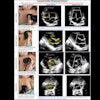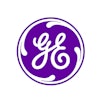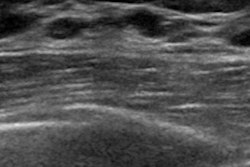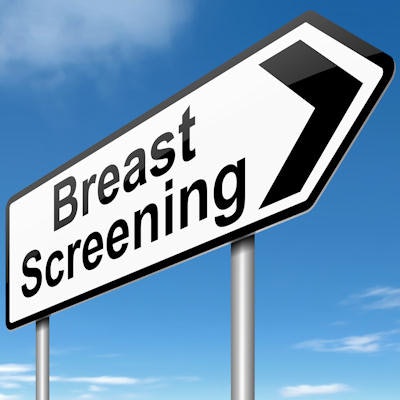
NEW ORLEANS - There may be fancier breast cancer screening modalities out there, but conventional ultrasound remains an effective screening tool in women with dense breast tissue, according to two presentations delivered at this week's American Roentgen Ray Society (ARRS) meeting.
Researchers from Elizabeth Wende Breast Care in Rochester, NY, found that ultrasound actually outperformed digital breast tomosynthesis (DBT) in women with heterogeneously or extremely dense tissue. In addition, researchers from NorthShore University HealthSystem in Evanston, IL, found that automated whole-breast ultrasound not only increased cancer detection compared to mammography alone, but also came through with low recall rates.
Effective ultrasound
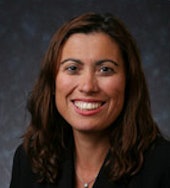 Dr. Stamatia Destounis of Elizabeth Wende Breast Care.
Dr. Stamatia Destounis of Elizabeth Wende Breast Care.In the first talk, Dr. Stamatia Destounis of Elizabeth Wende and colleagues compared the performance of ultrasound alone, ultrasound plus DBT, and DBT alone in identifying cancers in women with dense breasts. The study included 10,412 screening ultrasound exams performed on patients with dense tissue between January 2013 and June 2016. Of these patients, 7,146 also underwent DBT.
From the study data, Destounis' team identified 39 cancers in patients with dense breast tissue. Of these cancers, 69% were masses, 13% were calcifications, 10% were lymph nodes, and 8% were architectural distortions. As for cancer type, 77% were invasive ductal carcinoma, 13% were ductal carcinoma in situ (DCIS), and 10% were not breast malignancies, Destounis said. The average size of the cancers was 1.6 cm.
DBT alone found four cancers (10%), three of which were high-grade DCIS and one of which was invasive ductal carcinoma with DCIS. The combination of DBT and ultrasound found 18 cancers (46%), most of which were masses.
However, ultrasound alone found 17 cancers (44%), performing better than DBT, Destounis noted. Of these 17 cancers, 13 were invasive. And the lesions were smaller: Average lesion size was 2.7 cm with DBT and 1.5 cm with DBT plus ultrasound, while the average size was 1.3 cm with ultrasound alone.
| DBT vs. ultrasound in women with dense breasts | ||
| DBT | Ultrasound | |
| No. of combined cancers detected (DBT + US) | 18 | 18 |
| No. of cancers detected solely by this modality | 4 | 17 |
| No. of invasive cancers | 1 | 13 |
| Average lesion size | 2.7 cm | 1.3 cm |
The four cancers identified by DBT alone were calcifications, which points to a limitation of ultrasound, Destounis said. But these findings show that ultrasound definitely has its place in the breast cancer screening arsenal, Destounis said.
"Seventeen cancers were found on ultrasound only," she said. "If we had only performed tomosynthesis, we would have missed these. Overall, ultrasound outperformed DBT in identifying cancer in this group."
Assessing ABUS
In another presentation delivered during the same session, Dr. Georgia Giakoumis-Spear of NorthShore University HealthSystem highlighted findings from a study that evaluated the efficacy of automated breast ultrasound (ABUS) as an adjunctive screening tool in women with dense breasts.
Partly in response to breast density notification legislation, Giakoumis-Spear's institution began offering ABUS in November 2015 as a supplementary screening option for women with dense tissue. For the study, her group retrospectively reviewed the first 500 exams conducted after ABUS was implemented in women with breast tissue categorized as BI-RADS density category C or D. All of the women were asymptomatic and had experienced a negative screening mammogram within 12 months of the ABUS exam.
ABUS found six small (< 1.5 cm), node-negative, invasive breast cancers, for a cancer detection rate of 12 per 1,000 women. Of the 500 patients, 36 were recalled for additional imaging, for a callback rate of 7%. Eleven of these recalled patients underwent image-guided biopsy; the positive biopsy rate was 55%. The positive predictive value of ABUS was 17%.
"These results were astonishing to us," Giakoumis-Spear said.
The researchers also discovered that women with prior callbacks on mammography were 3.6 times more likely to be called back because of an ABUS finding, and women with prior breast cancer history were 6.1 times more likely to have cancer found on ABUS.
Going forward, Giakoumis-Spear and colleagues plan to further study the efficacy of ABUS over the next three years.
"Since we conducted this study, we've performed more than 7,000 additional ABUS exams," she said. "Our cancer detection rate has indeed dropped, but the callback rate remains at about 10%."

